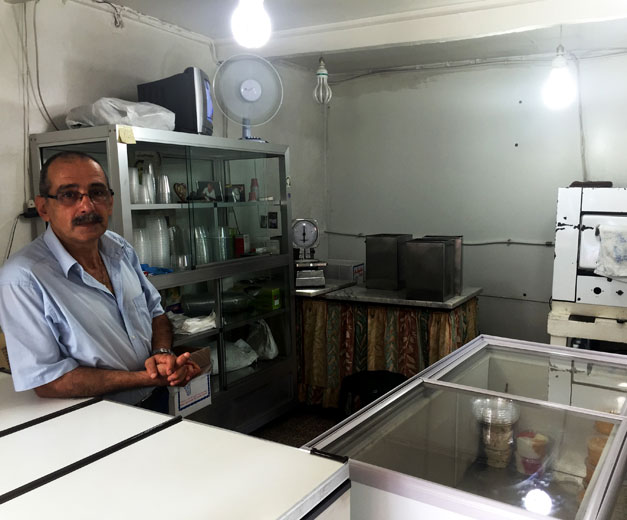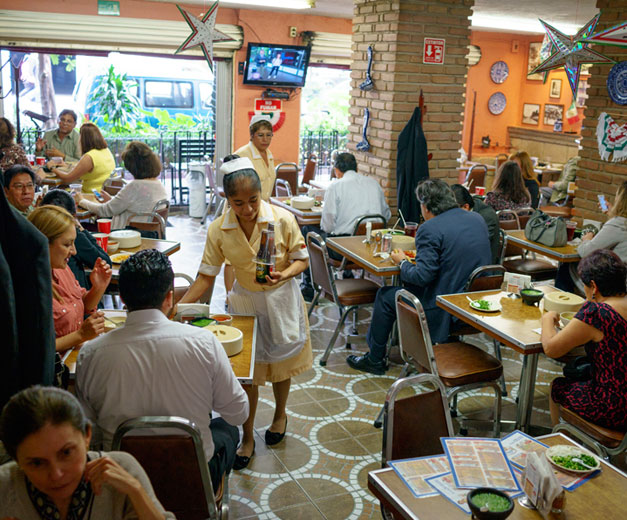We can't find the internet
Attempting to reconnect
Something went wrong!
Hang in there while we get back on track
Search results for "recipes"
Elsewhere
Hanna Metri: Beirut's Baron of Booza
The end of summer in Lebanon can be tricky. Sometimes it begins to rain in September, causing our favorite summer places to close early; other times it stays hot and humid almost until December. While it’s still hot out, locals seek out one of the treasured regional deserts, booza. At first glance, it seems like ordinary ice cream, but the minute you scoop it up you soon realize this frozen ice cream has a gum-like stretch. Booza is typically known as Arabic ice cream and is made with mastic gum, which prevents it from melting quickly in the hot summers we usually face. Unfortunately, many of the more traditional booza shops have given way to overpriced gelato parlors that serve extremely sugary ice cream to mask their artificial flavors. Few remain that serve traditional Levantine ice cream made with fresh fruit and cream. Ask anyone where you can find this delight, however, and they’ll point you to Hanna Metri.
Read moreBarcelona
Norte: Northern Exposure
On a beautiful corner of L’Eixample sits Norte, a small yet warm, inviting and light-filled bar with a constellation of shining lights spelling out its name inside and a few tables with fresh flowers. The restaurant was started by three partners, Lara Zaballa, María González and Fernando Martínez-Conde (who left the project last year). They met while working at Barcelona’s acclaimed Moo restaurant and had come to cooking from studying philosophy, art history and journalism at university. They were each looking for something more hands-on, work that gave them direct physical contact with matter, and that shared motivation connected them from the beginning. All three also came to Barcelona from other cities in northern Spain. After their experience at Moo and other projects (Zaballa and Martínez-Conde wrote for the prestigious cooking magazine Apicius), they looked for a more enjoyable and less stressful way to do what they loved, starting with basically nothing but their enthusiasm and their solid ideas to convince the banks to give them a loan to start their own restaurant in 2011.
Read moreMexico City
Beatricita: Taco Centenarian
In a town that runs on tacos, tacos de guisado may be the most ubiquitous version of the iconic dish in Mexico City. They can be found almost anywhere in the city, from specialty restaurants to markets, tianguis and street vendors selling them at stalls or even out of the trunk of a car. It may be an obvious point, but what distinguishes some tacos de guisado from others is how well prepared the guisados (home-style cooked meats or vegetables typically displayed and kept warm in earthenware dishes called cazuelas) are – and sometimes those coming out of the back of a car top ones from more “established” places.
Read moreElsewhere
Breakfast in Beirut, Part 2: Bohsali
An iconic Middle Eastern dessert, knefeh is to Lebanon what waffles are to Belgium. There are no records of its origins, but according to local legend the cheese-filled pastry comes from the Palestinian town of Nablus, and now it exists in different variations around the region, including in Lebanon.
Read moreIstanbul
CB Book Club: Aylin Öney Tan’s A Taste of Sun & Fire
For many (us here at Culinary Backstreets included), the city of Gaziantep is without a doubt the culinary mecca of Turkey. Located not far from Turkey’s southern border, a meeting point between the Arab Middle East and Turkish Anatolia, Gaziantep over the centuries has developed a culinary culture that is deeply rooted in the rhythm of the agricultural lands surrounding it and that is maintained with great pride and honor by the city’s cooks and food makers. Gaziantep is also the source for many of Turkish cuisine’s iconic dishes – the city’s famous baklava is without compare and its kebabs are truly works of art, the standard by which all others are measured.
Read moreTbilisi
Cafe Littera: Don't Call It Fusion
We are sitting under the tonic canopy of an enormous pine tree in a hidden Tbilisi garden, licking our lips over menu items that are neither European nor Georgian. When our dining companion informs us she will not share her trout tartare with adjika (highly concentrated spicy red pepper paste), we realize there will be no plate-dipping tonight. Just as we settle on our main courses, a woman in a blue chef’s jacket comes up to our table, beaming bonhomie, and asks if she can help us in any way. This is Tekuna Gachechiladze, the blue-eyed Tbilisi chef dedicated to changing the way Georgians understand their food culture. We are sitting at her latest culinary venture, Cafe Littera.
Read moreMexico City
Fonda Mi Lupita: Holy Mole
We’ve written about mole before, but it’s possible that there aren’t enough words to spill on such a complex dish – probably the most complex in all of Mexican cuisine. Mole has become part of the mainstream culinary scene in Mexico, and many restaurants now sell it every day of the year. However, very few places are mole-only eateries, and even fewer have a mole great enough to have sustained business for decades. One of our favorite eateries, Fonda Mi Lupita, a small fonda in the Centro Histórico that started making mole in 1957, holds that rare distinction.
Read more





